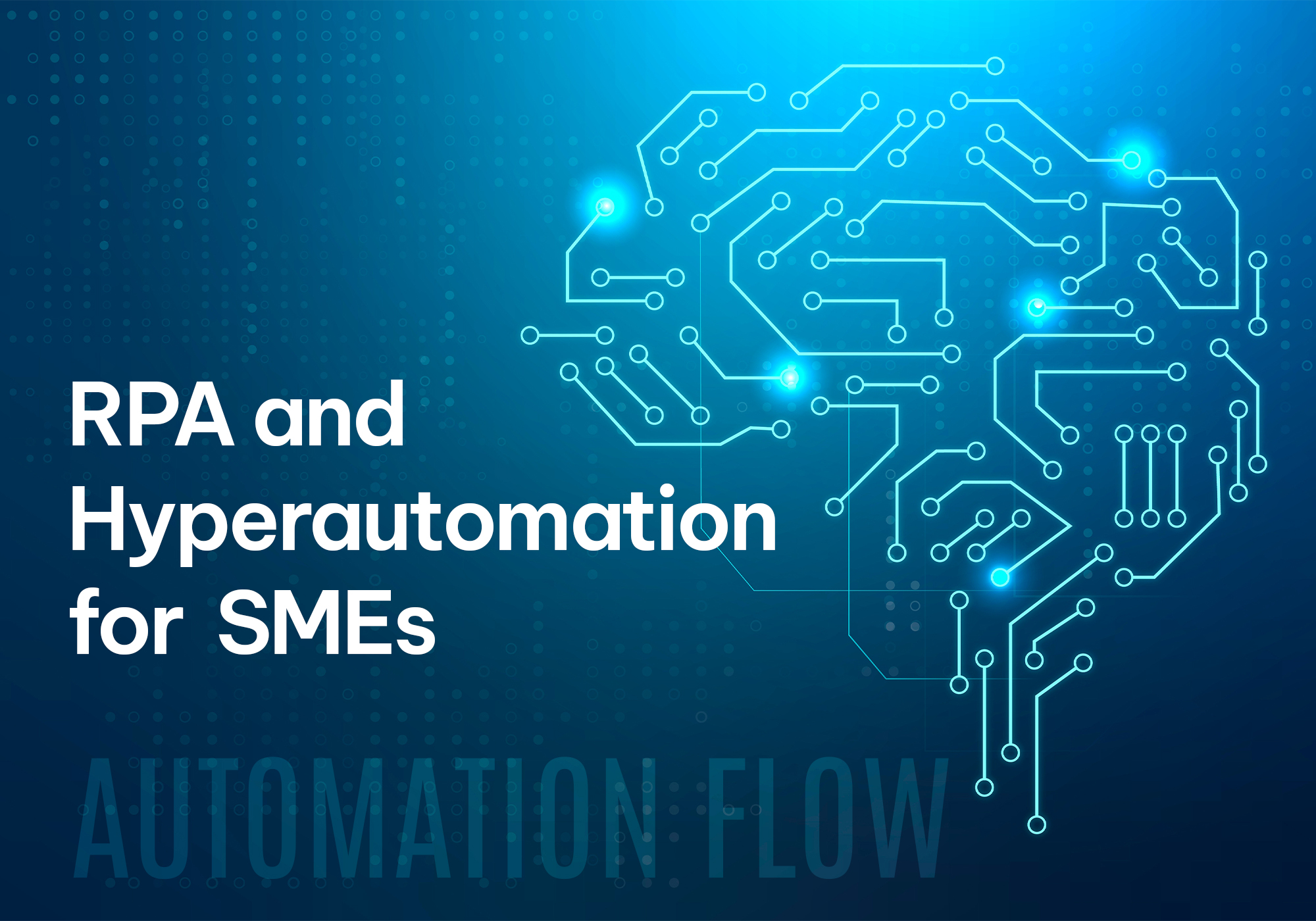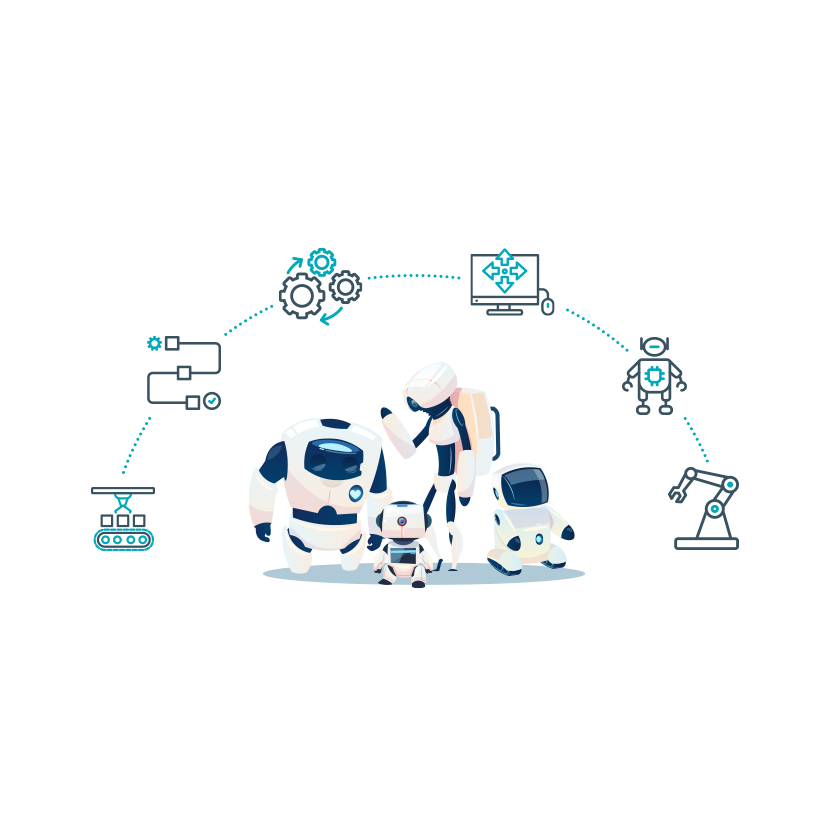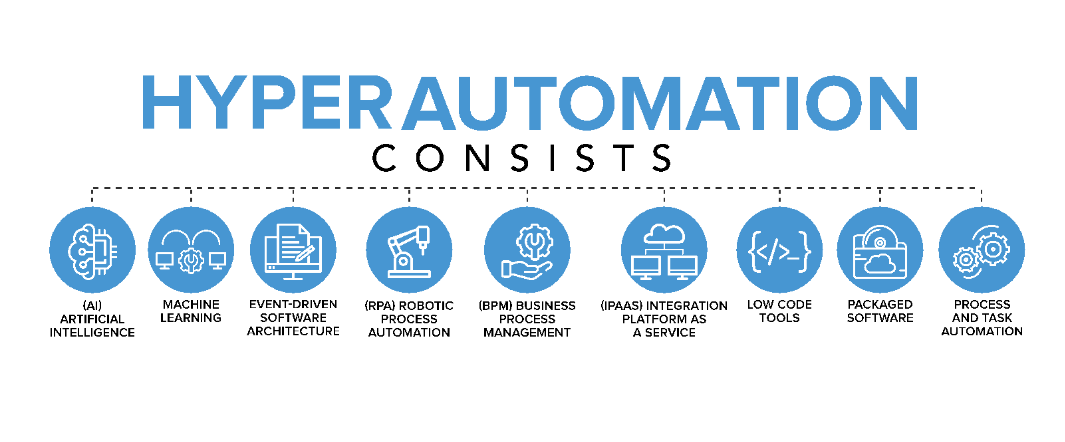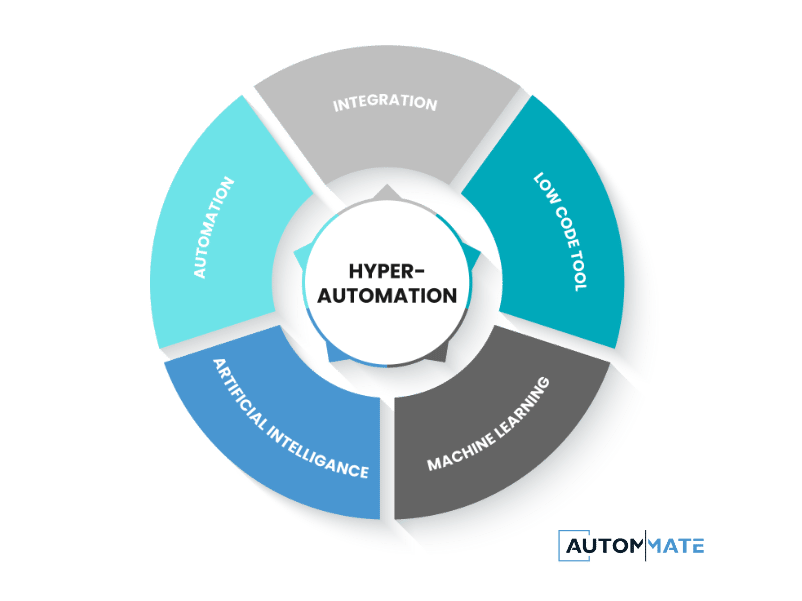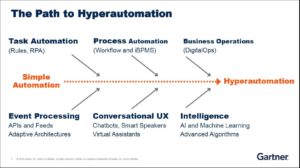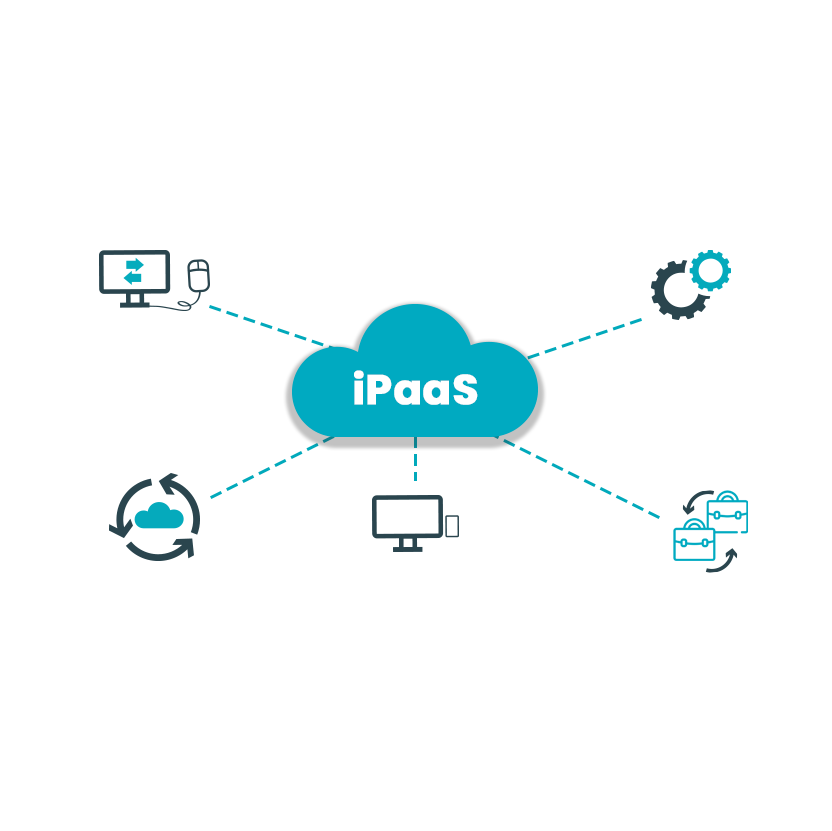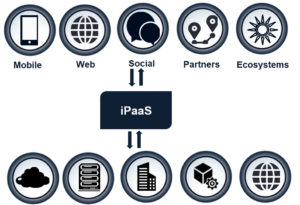As in their nature, small and medium-sized enterprises (SMEs) are always looking for ways to improve their efficiency and stay ahead of the competition, and as we’re entering the age of robots, automation has become an increasingly popular solution to help streamline business processes and increase productivity. While traditional automation has been helpful, intelligent automation using Robotic Process Automation (RPA) and Hyperautomation offers SMEs even greater benefits. According to a Forbes article, the future of automation lies in hyperautomation, which refers to combining RPA with artificial intelligence and machine learning to automate complex business processes.
In this blog post, we’ll explore the benefits, use cases, and trends of RPA for small businesses and provide examples of how these technologies can help small businesses improve their operations and compete more effectively in today’s marketplace.
Benefits of RPA & Hyperautomation for Small Businesses (SMEs)
Small businesses face unique challenges and often operate with limited resources. By leveraging RPA and hyperautomation, SMEs can benefit from increased efficiency, cost savings, and improved communication. Here are some of the main advantages of using these technologies:
Boosting Integrations
Hyperautomation unifies AI, ML, and NLP into one cohesive platform, enhancing overall system efficiency and offering an advanced level of automation. Small businesses, often restricted by limited resources and scalability challenges, find a lifeline in RPA and hyperautomation. They’re not just tools but essential allies in streamlining operations and boosting efficiency.
By optimising business processes, small enterprises are able to reduce operational costs, improve service delivery, and position themselves for competitive advantage and sustainable growth, without the complexities typically associated with advanced technologies. It’s a straightforward path to efficiency, scalability, and performance optimization, tailored to meet the unique needs and constraints of smaller operations.
A Better Communication Flow with Integrations
Integrating different systems and applications can be tedious for small businesses. However, hyperautomation can help create a better communication flow with integrations, allowing businesses to connect different systems and applications with ease, which leads to better collaboration and communication between departments, leading to improved decision-making and operational efficiency.
Higher Employee Satisfaction
The enhancement of employee well-being and job satisfaction is a pivotal aspect of organizational success. Through the integration of RPA and hyperautomation, we are positioned to transform the work landscape. These technologies are engineered to manage routine and repetitive tasks, allowing our valued employees to redirect their focus towards complex, intellectually stimulating projects.
In a workspace where automation streamlines efficiency, employees are entrusted with tasks that are both challenging and rewarding. The elimination of mundane tasks mitigates the risk of burnout, promoting an atmosphere of innovation, engagement, and heightened morale.
In essence, the strategic application of automation technologies is not merely a pathway to operational efficiency but a catalyst for workforce enrichment and organizational vitality.
Cost Saving
RPA and hyperautomation can lead to cost savings for SMEs. By automating repetitive tasks, businesses can reduce their reliance on manual labour and save money on labour costs. Additionally, automation can lead to fewer errors and faster processing times, reducing the need for costly rework. According to Vuram, Hyperautomation can result in up to 30% cost savings for businesses.
Scalability
Scalability is another benefit of RPA and hyperautomation for small businesses. As a business grows, its processes become more complex, and it can be challenging to keep up with the demand. However, with RPA and hyperautomation, businesses can scale their operations without incurring additional overhead costs.
Amplifies Automation Of Work
RPA and hyperautomation also amplify the automation of work, making it possible to automate tasks that were previously too complex or time-consuming to automate. This leads to greater efficiency, productivity, and speed.
Fosters Team Collaboration
Hyperautomation fosters team collaboration, allowing team members to work together more effectively and efficiently. This leads to improved decision-making, greater operational efficiency, and better outcomes.
Advanced Analytics And Insights
Advanced analytics and insights are another benefit of RPA and hyperautomation. By automating data collection and analysis, businesses can gain valuable insights into their operations, identifying areas for improvement and optimization.
Increases Business Agility
Hyperautomation increases business agility, allowing businesses to adapt quickly to changing market conditions and customer demands. This helps SMEs remain competitive and relevant in today’s fast-paced business landscape.
Improved Data Accessibility And Storage
Improved data accessibility and storage are another benefit of RPA and hyperautomation. By automating data collection and storage, businesses can ensure that their data is accurate, up-to-date, and easily accessible to authorised personnel. This can help businesses make informed decisions and improve their operations over time.
Use Cases of RPA & Hyperautomation for Small Businesses (SMEs)
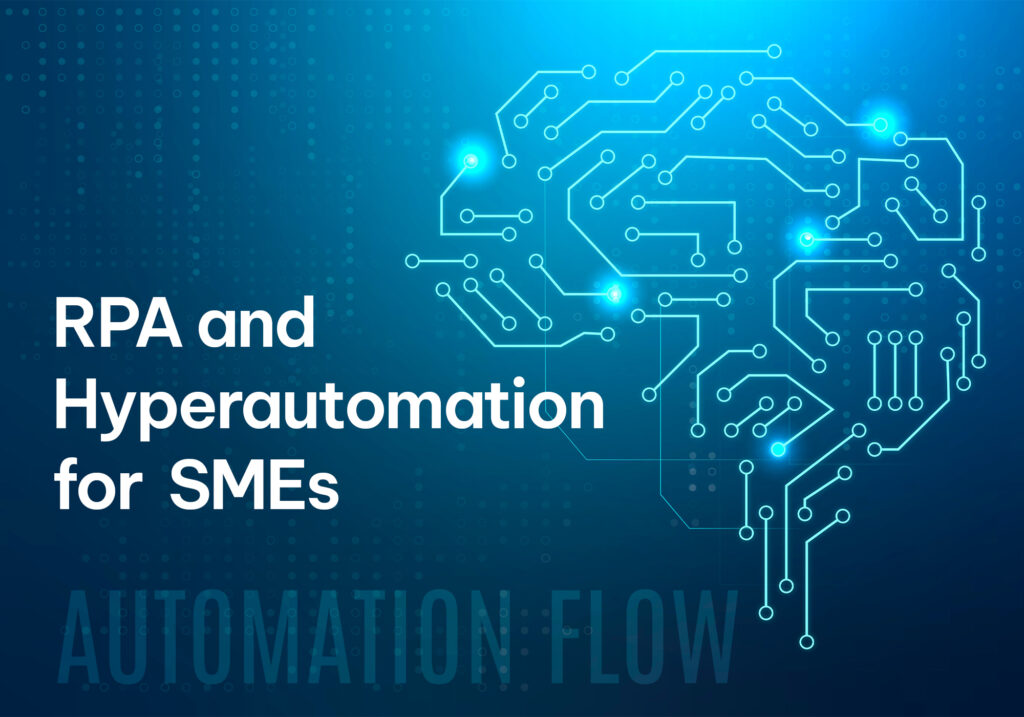
Small businesses can benefit from a wide range of use cases of Robotic Process Automation (RPA) and hyperautomation. Here are some examples of how automation can transform different aspects of a small business.
Accounting & Bookkeeping
Accounting and bookkeeping are essential functions of every small business, and automating these tasks can save significant amounts of time and improve accuracy. With RPA, businesses can automate data entry, invoice processing, financial reporting, and other time-consuming manual tasks, which can free up accounting staff to focus on more strategic tasks and can reduce errors. According to a report by Ernst & Young, RPA can save up to 70% of the time spent on bookkeeping tasks.
Customer Service
Customer service is an essential part of any business, and RPA can help small businesses streamline their customer service processes. RPA-powered chatbots can help customers with basic queries and redirect them to human agents when needed. This can reduce the workload on human agents, improve response times, and improve the customer experience. According to a report by Accenture, RPA can reduce customer service response times by up to 90%.
Marketing & Sales
Marketing and sales are critical for small businesses to grow, and RPA can help automate repetitive tasks, such as lead generation, lead scoring, and email marketing. By automating marketing flows, small businesses can focus on more strategic activities, such as creating targeted campaigns and analysing marketing data. According to a report by Gartner, hyperautomation can increase sales productivity by up to 15%.
HR & Payroll Management
RPA can automate many HR and payroll tasks, including employee onboarding, payroll processing, and benefits administration. Automating these tasks can reduce errors, ensure compliance, and free up HR staff to focus on more strategic tasks. According to a report by Deloitte, RPA Can reduce the average time and associated costs to execute transactional processes by 60% to 80% on average.
Supply Chain Management
Small businesses can also benefit from automating supply chains management tasks such as order processing, inventory management, and shipment tracking. With RPA, businesses can streamline these tasks, improve accuracy, and reduce lead times. According to a report by McKinsey, hyperautomation can reduce supply chain costs by up to 30%.
Small businesses can benefit from automating various aspects of their operations with RPA and hyperautomation. By automating repetitive and time-consuming tasks, businesses can improve accuracy, reduce costs, and free up employees to focus on more strategic tasks.
Automate, Integrate, Intelligate with Autom Mate
Our cutting-edge automation software combines the power of Robotic Process Automation , Artificial Intelligence , and Machine Learning to create customised, end-to-end automation solutions that drive significant business value.
Key Features of Autom Mate
- With Automate Mate, SMEs can leverage the benefits of hyperautomation without breaking the bank. Our platform offers flexible pricing plans that suit businesses of all sizes and enable SMEs to quickly automate manual and repetitive tasks across all departments.
- Our integration platform empowers SMEs to easily integrate their legacy systems with the latest technologies, ensuring their systems can operate efficiently and effectively. It helps businesses connect disparate systems and automates data exchange, reducing manual work and increasing productivity.
- Autom Mate provides a drag-and-drop interface for building automation flows and integraitons, making it easy for even non-technical users to create automation workflows.
With Autom Mate’s drag-and-drop interface, you can easily select pre-built actions and drag them onto the workflow canvas. You can then configure the actions using the corresponding configuration options, which are presented in a simple, intuitive way.
In conclusion, Autom Mate provides small and medium-sized enterprises with the tools and expertise they need to succeed in a rapidly changing business environment. By automating their manual tasks, integrating their systems, and leveraging the insights of AI and ML, SMEs can improve their business agility, employee satisfaction, and customer service and achieve sustainable growth.

